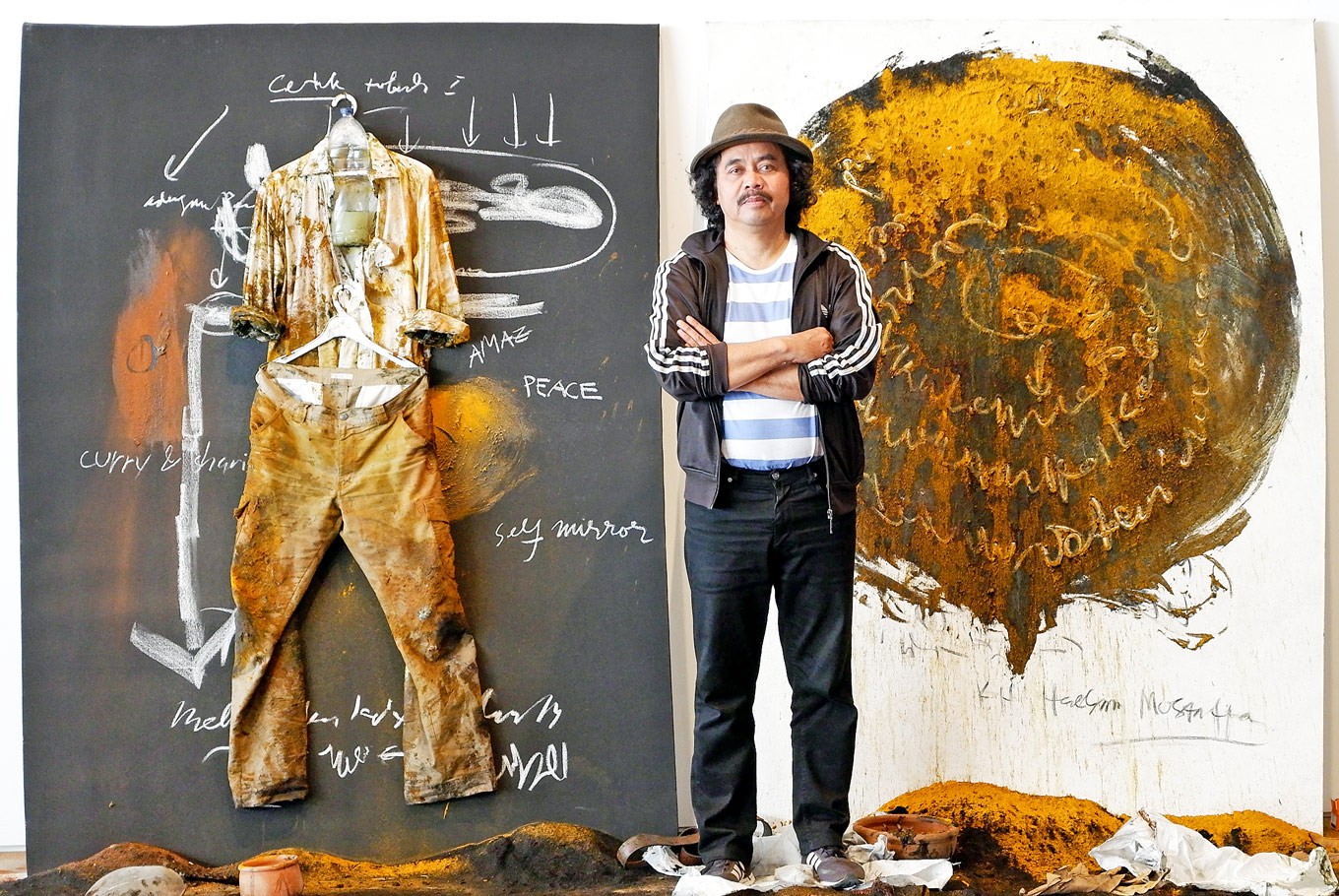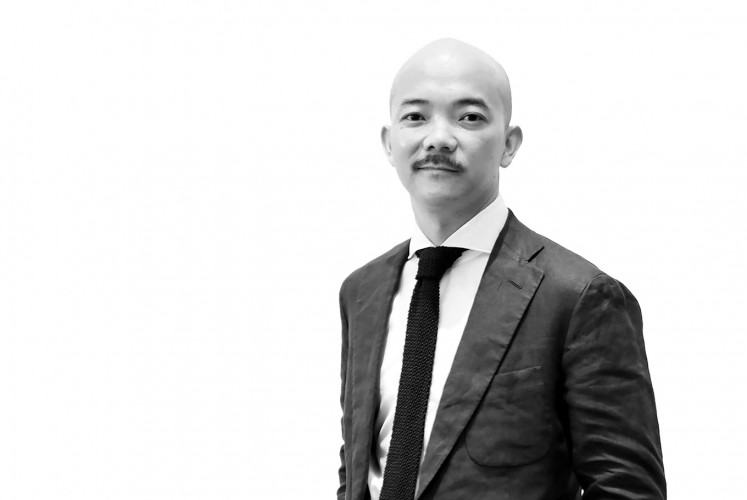Popular Reads
Top Results
Can't find what you're looking for?
View all search resultsPopular Reads
Top Results
Can't find what you're looking for?
View all search resultsSix artists present stunning works at Museum MACAN
Change text size
Gift Premium Articles
to Anyone
S
ix renowned artists from Indonesia and China delivered remarkable performances at the First Sight event held ahead of the country’s first world-class modern and contemporary museum in November.
Clad in a black dress and white shoes, a 48-year-old woman walks while holding a basin of ink. She then dips her head into it, putting some ink in her mouth. Staring blankly at a white wall, she then spits out the liquid.
With a face splattered with ink, she then lies down while vomiting out the remaining ink. She groans and makes a deep inarticulate sound as if in despair and suffering.
She then stands up and repeats what she did for three hours. The result is beautiful ink splashes on the walls and floor.
She is Melati Suryodarmo, internationally renowned artist popular for her long-durational works. In her show Eins und Eins (One and One), she imagines herself as the embodiment of a disgruntled nation full of oppression, aggression and violence.
Contemplation: Award-winning artist Melati Suryodarmo stages Eins und Eins (One and One) at Museum MACAN in Jakarta. (JP/A. Kurniawan Ulung)She and five other contemporary artists — FX Harsono, Tisna Sanjaya, Reza Afisina and Agung Kurniawan from Indonesia and Yin Xiuzhen from China — took part in the First Sight program at the Museum of Modern and Contemporary Art in Nusantara (Museum MACAN) in West Jakarta recently.
Established and financed by businessman and renowned collector Haryanto Adikoesoemo, Museum MACAN, Indonesia’s first world-class museum dedicated to modern and contemporary art, will officially open its doors to the public on Nov. 4 .
The museum’s director Aaron Seeto defined First Sight as a space for contemplation and conversation, where artists and visitors can start to have a public discussion about what role the museum and art can play in society after its opening in November.
“How can art reflect our stories and histories? How can it connect us? How can it challenge us? How can we begin to imagine a future differently? These are all ideas to be provoked through First Sight,” the 39-year-old said.
Haryanto has over 800 works of modern and contemporary art at the 4,000-square-meter museum, comprising a 2,500-square-meter gallery and 1,500-square-meter public area, including an educational space.
About 50 percents of the artworks, which the businessman has collected for over 25 years from Indonesia, 25 percent from the US and Europe, and 25 percent from the greater Asian region.
The works include those from Indonesian masters like Raden Saleh, S. Sudjojono and Affandi as well as international artists like American Robert Rauschenberg, South Korean Park Seo-bo, German Gerhard Richter, English Damien First and Japanese Yukinori Yanagi.
“This museum is Haryanto’s vision,” Seeto said.
Museum MACAN's director Aaron Seeto (Museum MACAN/File)Haryanto asked Seeto to be the museum’s director in November last year, an offer he accepted after learning of the museum’s educational purposes.
“You can come from any background and you will be welcome in this museum. That is in line with my own personal view that art is for everyone. I think this museum is a landmark in Indonesia and I am really happy and proud to be part of it,” he said.
Before Museum MACAN, Seeto was director of the 4A Centre of Contemporary Asian Art in Sydney for eight years as well as curatorial manager of Asian and Pacific art at the Queensland Art Gallery and Gallery of Modern Art in Australia.
Reza, who used debris and refuse from Museum MACAN’s construction and his house for his performance during the First Sight, said he was over the moon when he was invited to take part in the event by Seeto, who met him for the first time during the Sydney Biennale in 2008.
At his latest show for the museum, the Bandung, West Java, artist allowed his viewers to contemplate how waste materials become artworks.
“I was inspired by simple things I observed every day and I liked to play with objects I easily found, such as my child’s toys,” said director of ArtLab at artist collective RuangRupa in Jakarta.
Unlike Reza, who performed alone, Agung, who comes from Jember, East Java, invited 65 audience members to play with him in a show that paid tribute to former palace singer Sri, who was a survivor of the 1965 tragedy.
The 65 participants stood in a circle with Agung, who acted like a conductor, in the middle. Under his baton, they sang like a choir, retelling Sri’s story.
In a performance titled Potret Diri Sebagai Kaum Munafik (Self-Portrait as Hypocrites), Tisna collaborated with his audience. Together, they painted prayer rugs using spices, earth and charcoal, — materials that he believes represent the diversity of Indonesia.
Tisna, who also comes from Bandung, said his show was inspired by growing intolerance recently, not only in Indonesia but also in other countries, including those in Middle East.
“In Indonesia, for example, there is the case where Ahok was defeated by the power of religion used for political purposes,” he said, referring to jailed former Jakarta governor Basuki Tjahaja Purnama.
Believing in the Quranic verse that says “for you, your religion and for me, mine,” Tisna raises concerns about the religious intolerance that threatens the unity of Indonesia.
Through his performance, the lecturer at the Bandung Institute of Technology wanted to deliver a message that people must be tolerant toward each other and can live in peace and harmony together regardless of religion or race, ethnicity or tribe. “Diversity should become a beautiful mosaic,” he say.













